How to Visit Auschwitz, and Is Auschwitz Worth Visiting?

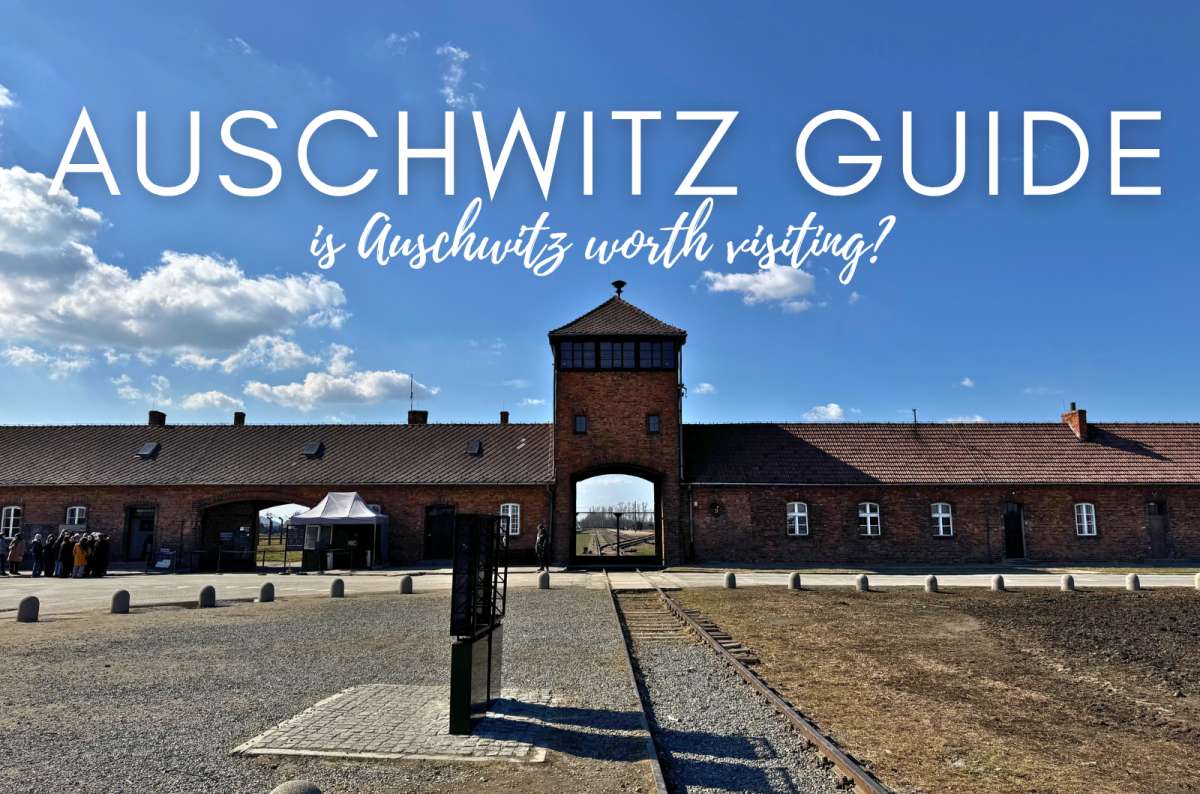
When I was planning my visit to Auschwitz and Krakow, I found it a bit tedious to plan my visit to the Auschwitz site. It is among the most visited sites in Poland, but I expected the planning to be easier than that.
This guide is based on my personal experiences visiting Auschwitz, aiming to provide you with practical advice and insights to make your trip smoother and more meaningful.
I visited Auschwitz twice in my life, and the latest visit was in 2025, so the info is pretty current.
Besides the guide on how to visit Auschwitz, I will answer the other questions as follows: Is Auschwitz worth visiting? And how to get to Auschwitz from Krakow.
Read more from my Poland travel blog.
Is Auschwitz worth visiting?
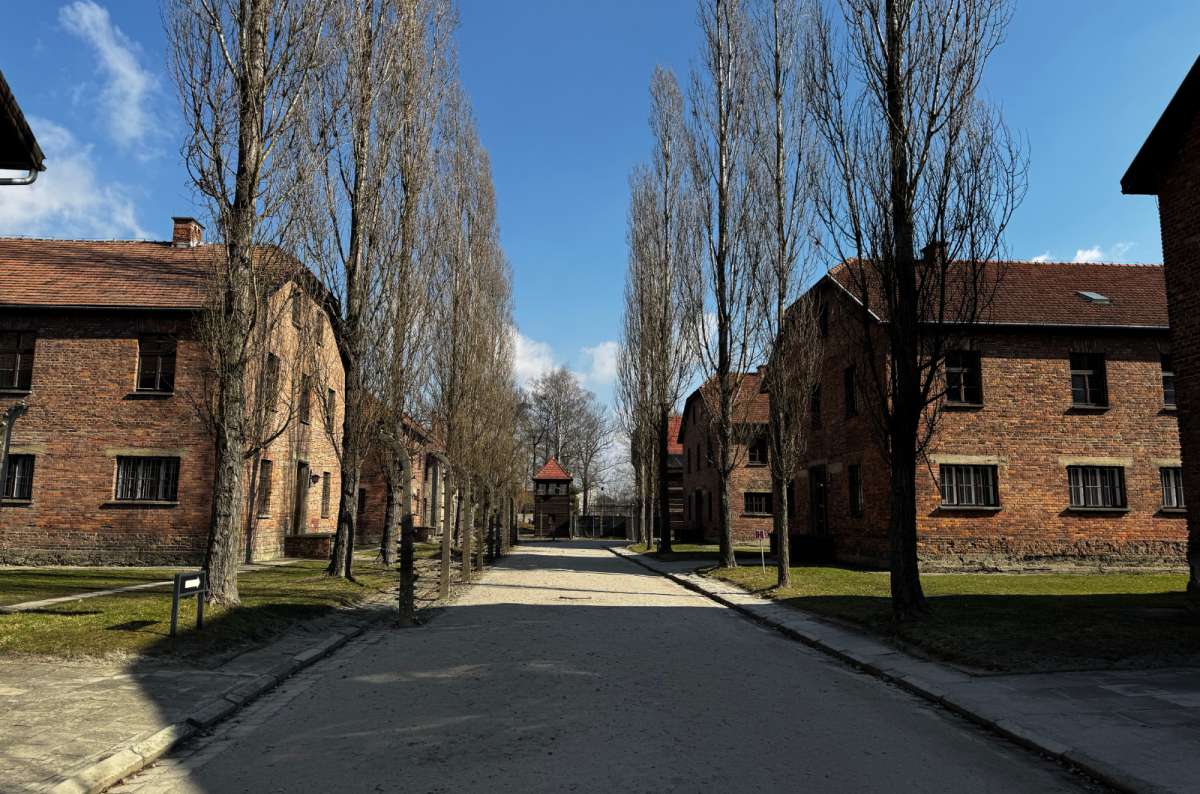
It feels like walking in a post-apocalyptic ghost town
A simple question, but a bit of a more complex answer. I will try to answer in my own language of numbers and reviews.
- Getting to Auschwitz - 9/10
- Value for Money - 10/10
- Guides - 10/10
- Historical significance - 15/10
- Overtourism - 3/10
- Overall - 47/50
As you can see, I give it a very high mark in my completely imaginative and subjective scale of self-proclaimed travel guru–me.
Jokes aside, Auschwitz II Birkenau concentration camp complex is such an important place to visit that even the only weak spot it has, which is very strong in terms of tourism and “herd feel,” is well worth the visit.
I strongly recommend visiting Auschwitz at least once in your life to remember the “never again" motto and to gain a deeper understanding of history.
The value for money is okay, I guess, for a mostly half-day trip. I found it a bit expensive, but it’s justified as it is such a vast site.
Sometimes, all you need to do is take the first step... I've filtered out the best hotels in Krakow for you
Save it for yourself to come back to later, or share with your friends on social media!
How much time do I need to visit the Auschwitz concentration camp?
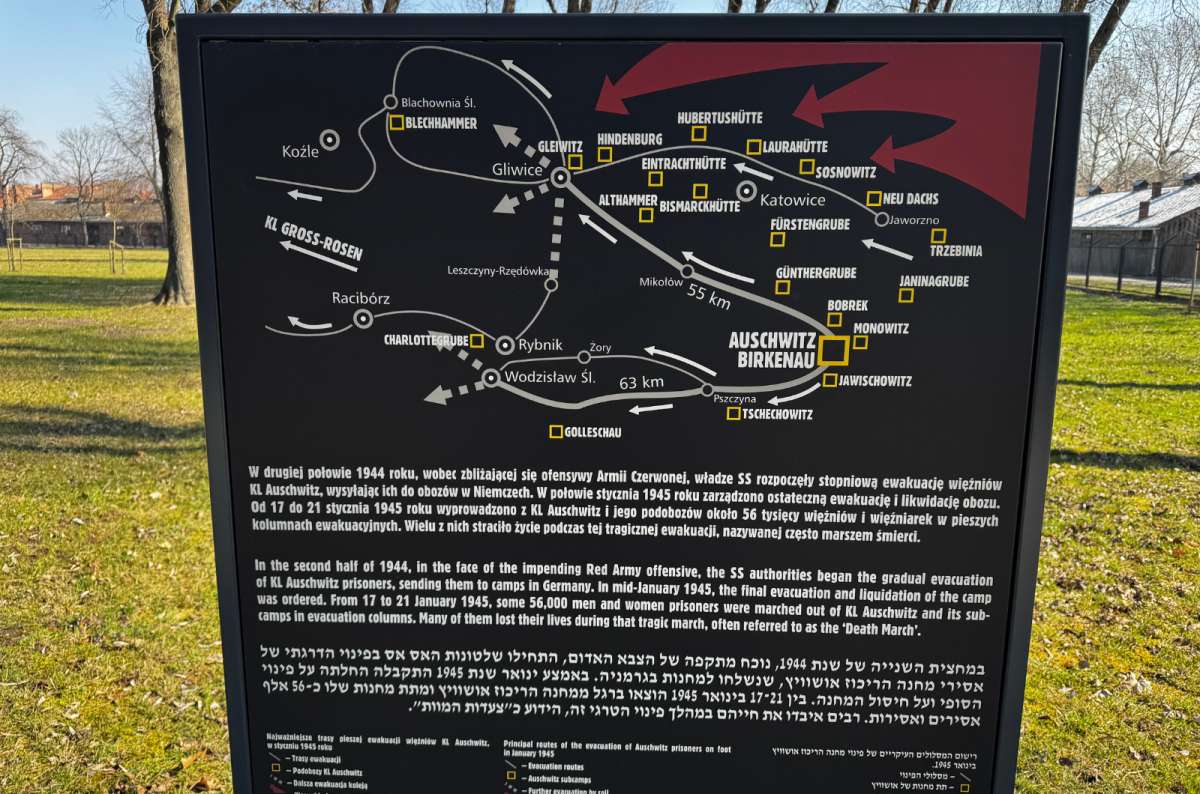
You can see that the area is anything but small, be ready for a lot of walking
I would count at least 0.5 days for the visit, but many visitors choose to spend a full day at Auschwitz to fully experience both Auschwitz I and Birkenau. Tour of the Auschwitz will take at least 2 hours, depending on your guide, and if you have the tour including the Birkenau Camp, it will take you at least another 2 hours.
Some visitors spend more time in each part of the camp, especially if they want to reflect or explore at their own pace rather than follow a guided schedule.
Don’t forget to calculate at least 1 hour of drive time from Krakow and 45 minutes in reserve before you arrive.
How to get to Auschwitz from Krakow
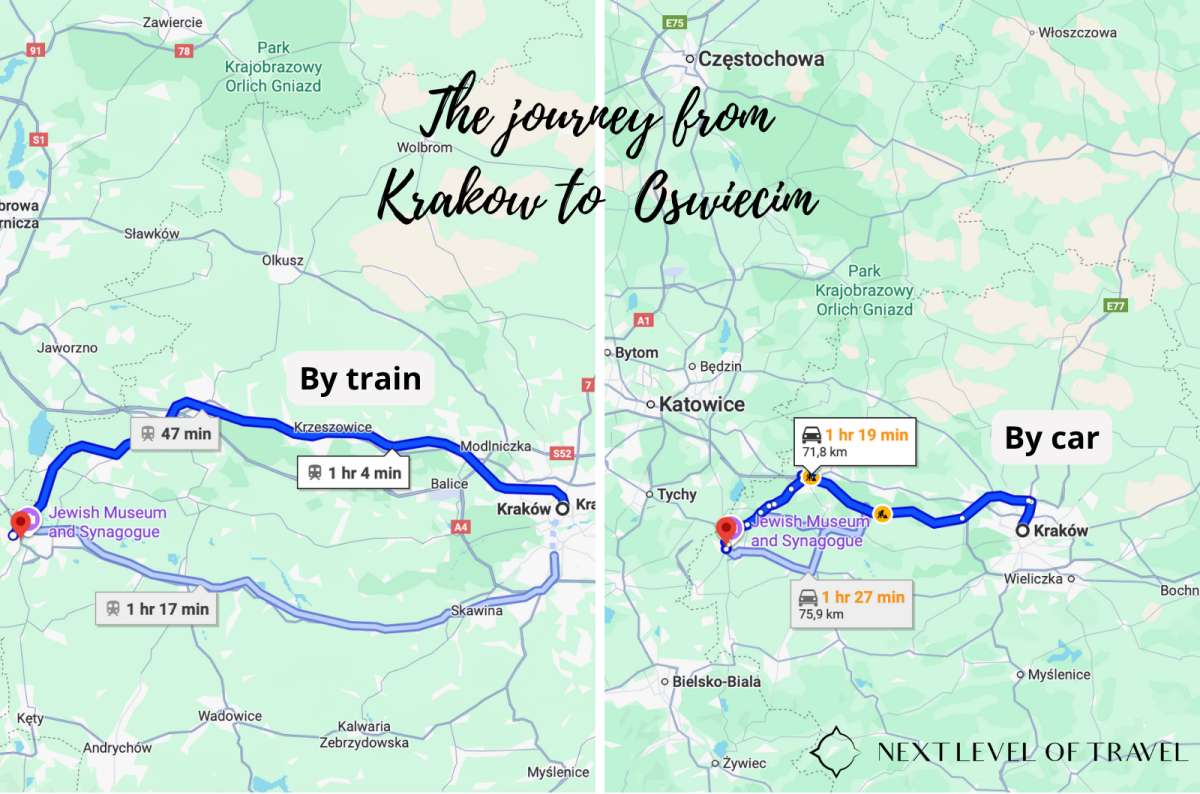
As you can see, the journey doesn’t take very long
By Car
Visiting the Auschwitz-Birkenau concentration camp by car is super easy. It's very close to the highway, which is free in Poland. It's about a 1-hour drive from Krakow, and there is a huge parking lot for 20 zł on site.
By Train
Trains from Kraków to Oświęcim (the town where Auschwitz is located) depart regularly from Kraków Główny station and take about 1 hour and 20 minutes. From Oświęcim train station, it’s roughly a 20-minute walk or a short local taxi/bus ride to the Auschwitz I Museum entrance.
By Tour to Auschwitz from Krakow
Most of the visitors to Auschwitz visit by a preplanned day from Krakow. There are many providers, and the tours mainly start in Krakow, but you can go from Warsaw and other cities as well.
The perk of the mass tour is that they are cheap. Tours start at 20 USD and do not include tickets and go up to 90 USD.
Most tours can be found at viator.com and getyourguide. I will be happy if you use my link with the promo code to help us create content.
By Bus
Buses to Auschwitz leave frequently from Kraków MDA Bus Station (next to the main train station) and stop directly in front of the Auschwitz Museum. The journey takes around 1 hour and 30 minutes and is often the most convenient option since you don’t need additional transfers.
Having said all that, the most frequent means of transport to Auschwitz is by far private car and organized tours from Krakow. But if you have a kink for it, you can take public transport as well.

Buying tickets to the Auschwitz concentration camp–Value for Money
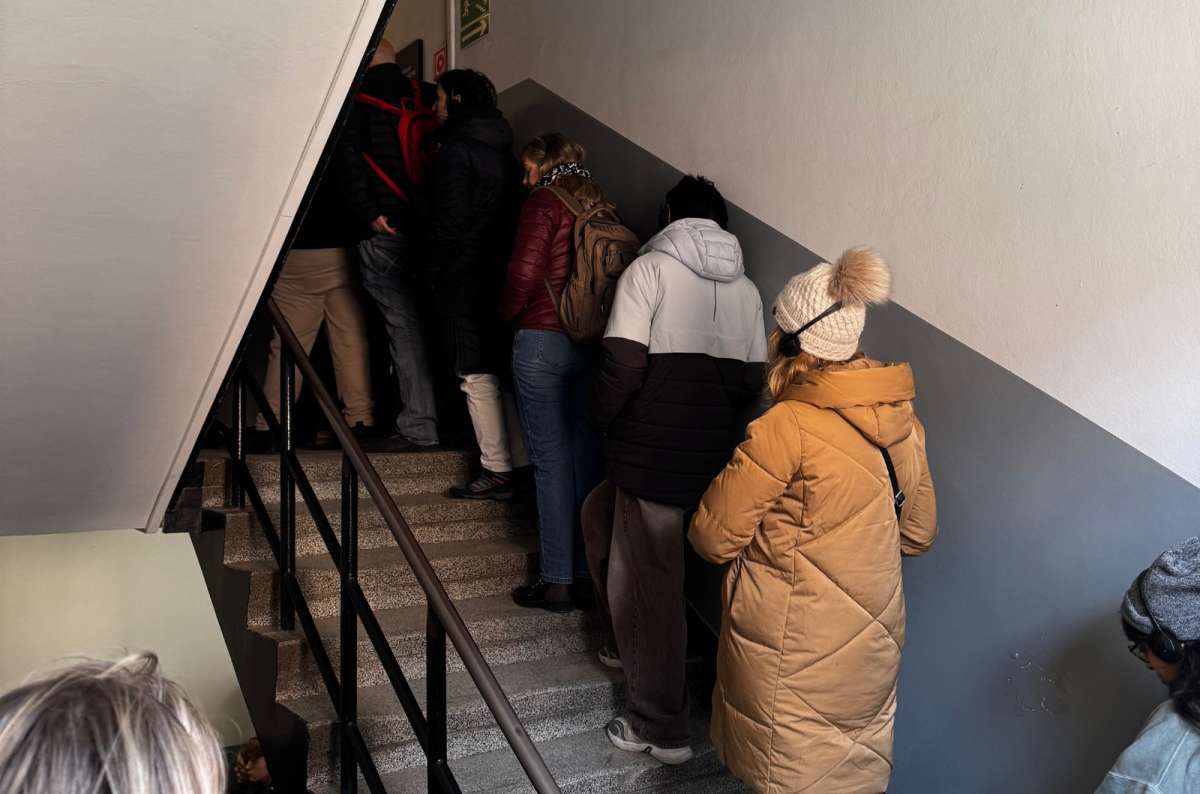
The tours are in high demand, so be sure to book your tickets in advance
I start my guide to visit the Auschwitz-Birkenau concentration camp by buying tickets. It’s simple–you will have to buy them online, and you have to buy them upfront. In the top season, you need to buy it at least 1 month ahead.
Buy online in advance at – https://visit.auschwitz.org – it is the only official site. Don’t buy from resellers and don’t pay unnecessary fees.
I loved that you can buy Auschwitz tickets without signing up–I don’t want to be a member of everything. Anyway, it costs 110 zł per general tour, which takes 3.5 hours and is offered in most international languages–PL, EN, DE, RU, ES.
When you enter Auschwitz, you must go through a security check at the entrance gate, and you need to show your ticket (printed or digital). Advance booking is required, and guided tours are highly recommended for a deeper understanding of the site.
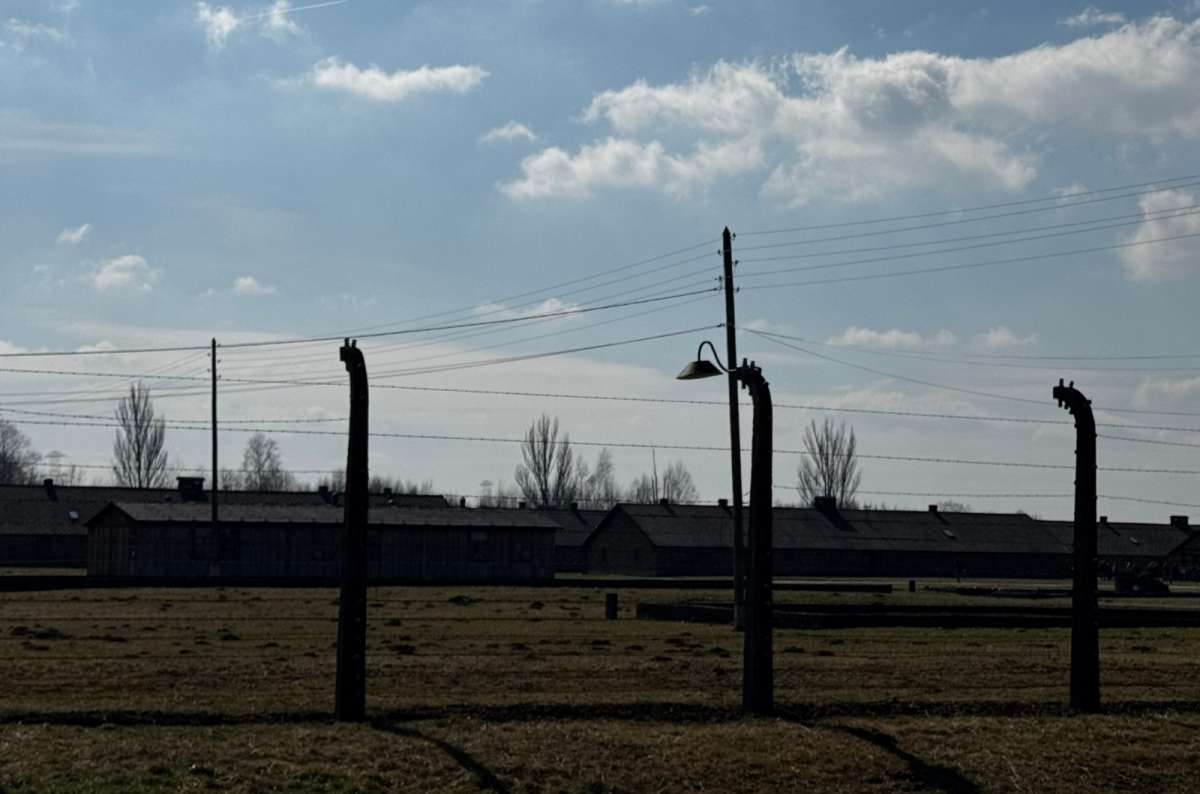
The guided tour will provide you with the much-needed context to truly feel the horrors of this place
While purchasing tickets, you can also donate to the museum. You know me–so donate, don’t be cheap. Entry to the memorial is free, but guided tours are paid. And keep in mind–you can’t enter the museum without a prepaid ticket; you actually have to buy in advance online.
Top Tip: You have to buy your tickets online. You can’t walk in.
I bought it on the March 2025 guided tour in January, and the tours were already pretty full.
As for the value for money, it’s not a cheap site to visit, but it’s so significant that it justifies the price. I give it an imaginary mark of 10/10.
Practical Tip: There are paid toilets available at the entrance, so make sure to bring some small change with you.
Tips before you go, and things that surprised me
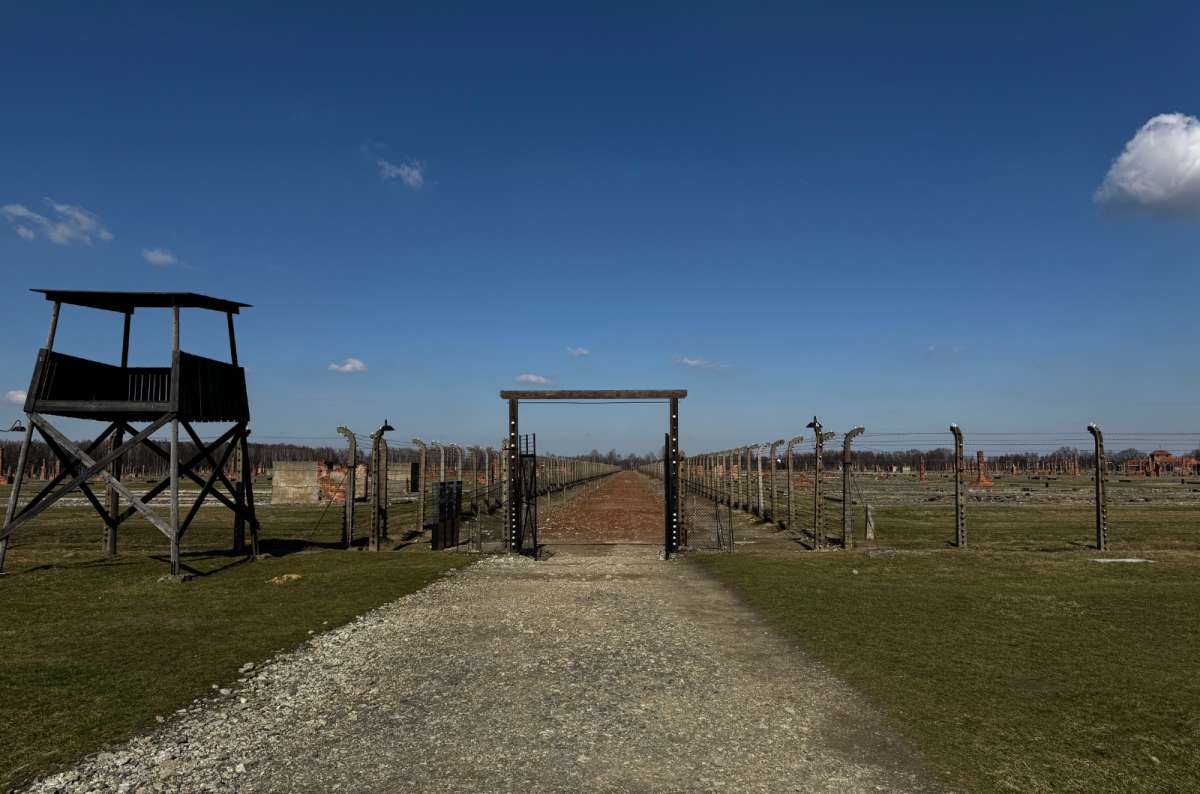
The place has many safety precautions, so be prepared
-
Buy the tickets as early as you know your exact visit date. In high season, it gets full early.
-
Expect traveling by bus between the Auschwitz camp and the Birkenau extermination camp–what an unpleasant surprise it was
-
Pay attention to which language you book your tour in. There are a few of them in many languages, and you don’t want to end up on a speaking tour if you are not speaking German.
-
Bring your passport or national ID with you–they pair them with the tickets at the security.
-
Prepare for the airport-level security with all the gates and security checks.
-
Arrive at least 45 minutes before the tour. The security took 30 minutes, and we had about 2 minutes before our tour started.
-
Visiting Auschwitz is not only a personal experience but also an important act to help preserve the lessons of history for future generations.
-
We hope that your visit will inspire you to remember, reflect, and carry forward the significance of what you learn at Auschwitz.
Brief history of the Auschwitz-Birkenau
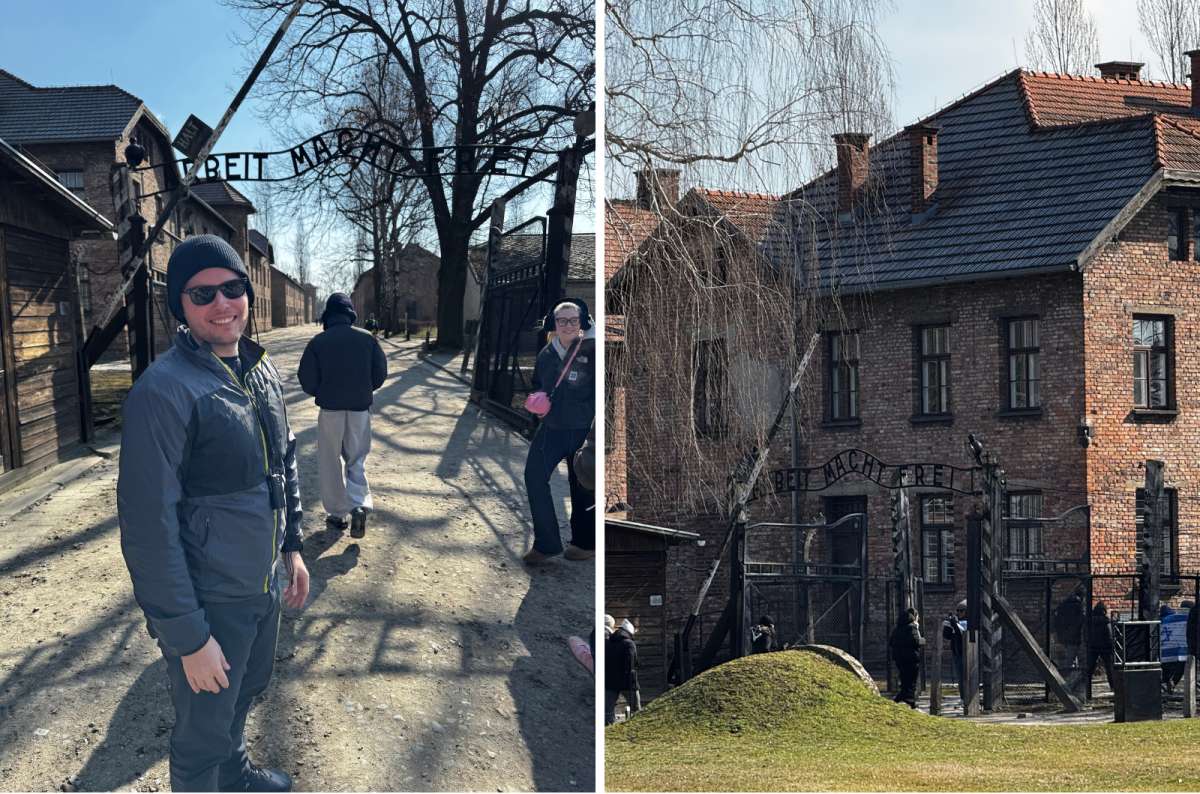
Here you can see one of the most famous gates in the world
The Auschwitz part with the infamous gate reading “Arbeit macht frei” (“Work sets you free”) predates World War II. It was originally a Polish cavalry barracks.
The camp was established here because most of the buildings already existed, having been used by the Polish cavalry in the previous decades. Rudolf Hoss, the camp commandant, oversaw the operations and executions at Auschwitz, playing a central role in its daily function and the implementation of Nazi policies.
In typically German fashion, it was simply considered the most efficient way to conduct “business.” The first experiments with Zyklon-B gas took place here, marking the beginning of mass murder at Auschwitz and the evolution of the camp into a site of systematic genocide.
The Birkenau section was built later, in 1941, with the “Final Solution” of an extermination camp in mind. Birkenau is much larger than Auschwitz I and consists mainly of wooden barracks, designed after the plans for horse stables. So many people from across Europe were brought to Auschwitz, making it a symbol of the vast human toll of the Holocaust.
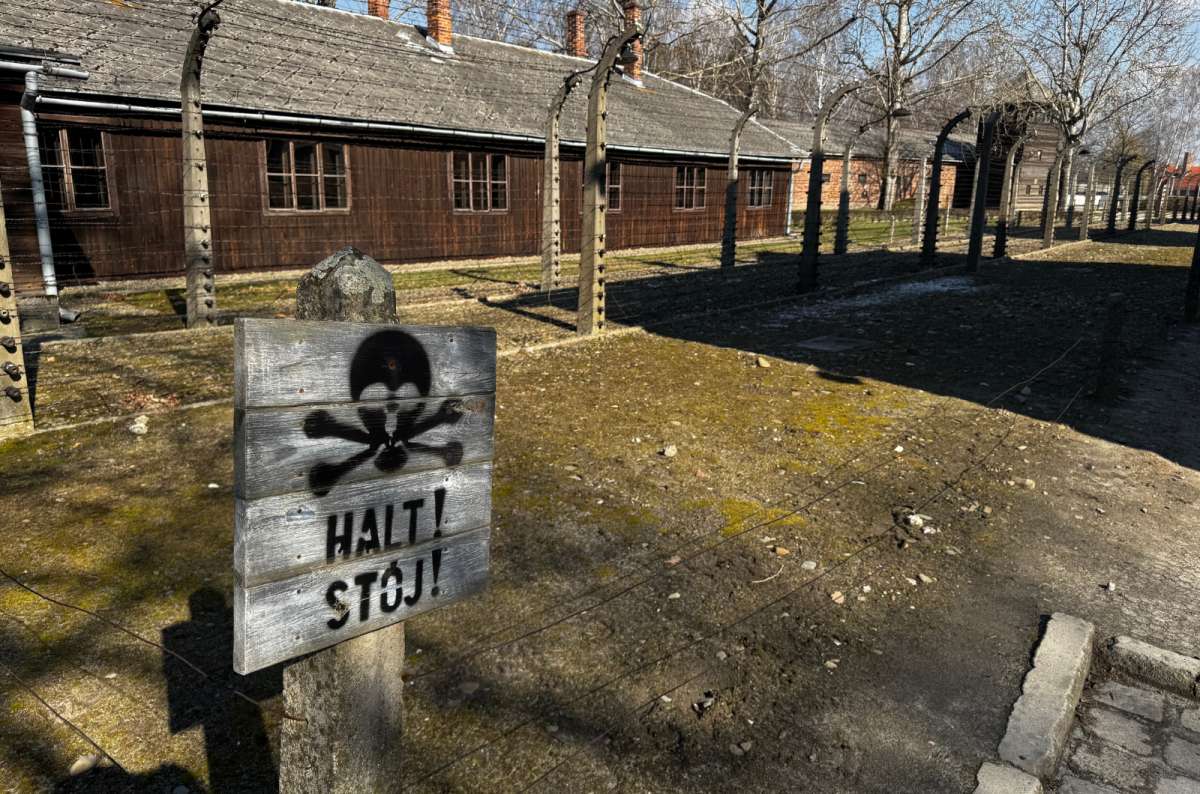
The barracks really do resemble horse stables
The Camp was working for almost 5 years, and 1,1 million people were killed here, including around 1 million Jews, until January 1945. Auschwitz III-Monowitz no longer exists, as it was dismantled after the war.
Why did they build the camp in this part of the Reich? There was a significant population of Jews in the Kraków area whose roots go back to the 16th century. And you know logistics is expensive. It was also centrally located for all the transport from all over Europe, even as far as Greece or western Russia.
It is crucial to remember what happened at Auschwitz, as understanding these events is essential to honoring the victims and ensuring that such atrocities are never repeated.
Timeline:
- May 1940–first prisoners arrive
- June 1940–political prisoners arrive
- October 1941–Auschwitz II Birkenau started to be built
- 1942–first gas chambers in work
- Fall 1944–Germans started to cover the tracks
- January 1945–Death Marches
- January 1945–Liberation of the camps by the Soviet Army
Numbers backing the story
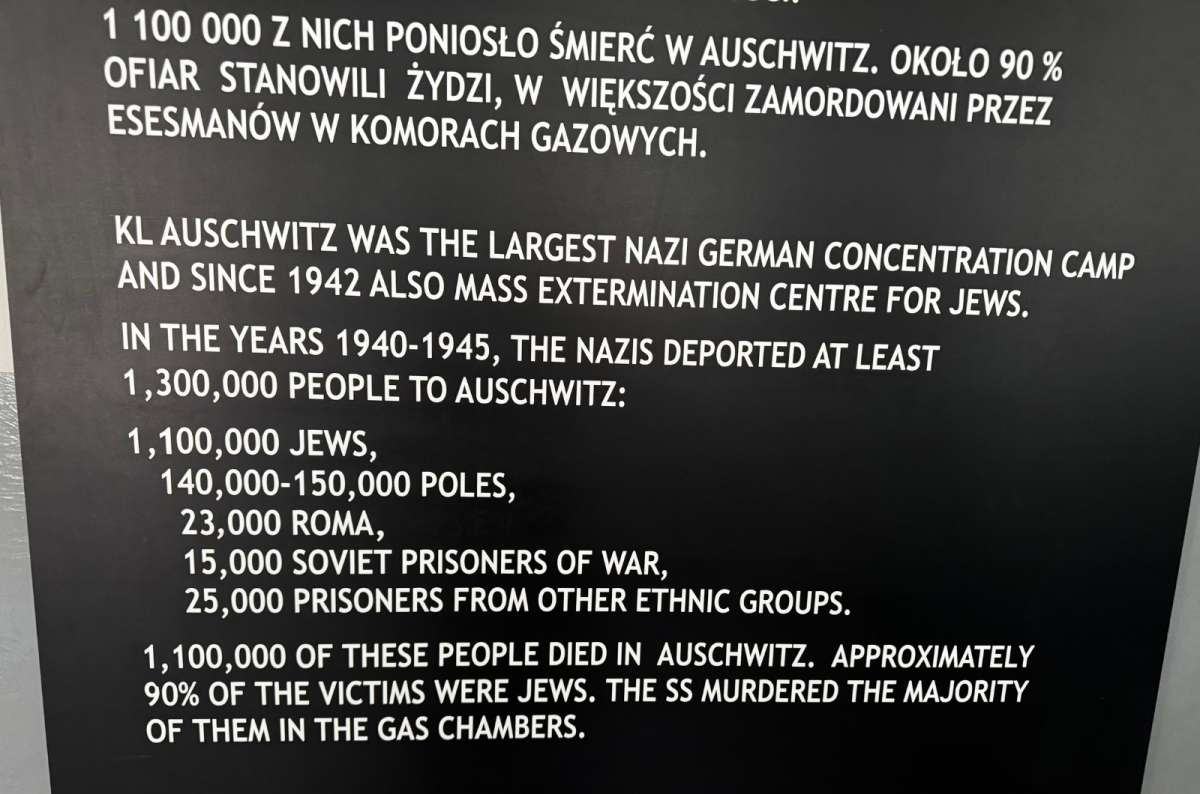
In the 5 years that Auschwitz was running, it had amassed a staggering number of deaths
-
1,1 million we killed -> 960.000 jews, 70.000 Poles, 21.000 Roma, 15.000 Soviet POWs, 15.000 others.
-
80 % of people were killed immediately after arrival, and 20% were fit for work
-
Nazis took memorabilia pictures for high-ranking officials (240 of them), which were then used during the Nuremberg Trials
-
Most of the people were killed by Zyklon B gas in the gas chambers. It usually took seconds to 10 minutes.
-
You can see a lot of real human hair collected from the bodies. There are 2 tons of hair, which is 40,000 people. Germans wasted nothing.
-
There were 200 people in a room of a few square meters.
-
There were 20,000 living prisoners in Auschwitz and 100,000 in Birkenau.
Enter the Auschwitz-Birkenau concentration camp and what to expect
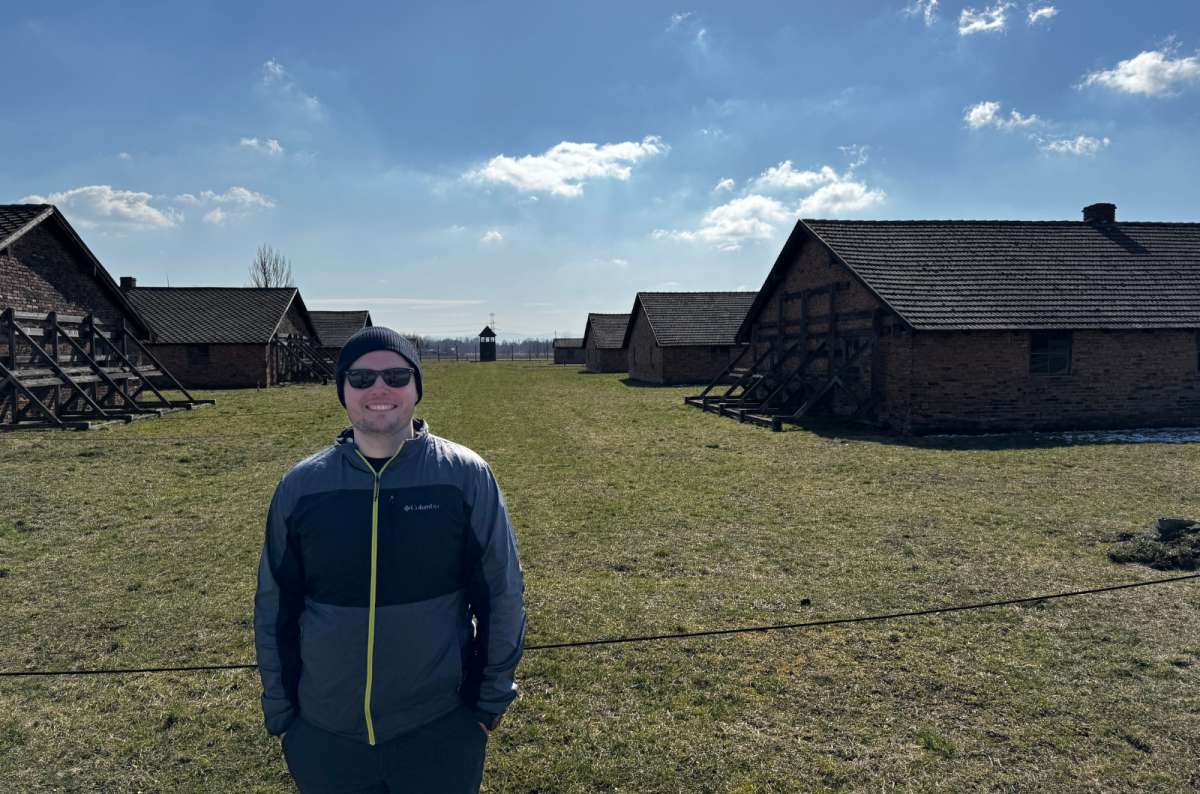
The scope of the camp is insane
After you park your car, you will enter the Auschwitz camp part, after you go through a very thorough security check, which can take longer than 30 minutes. The sheer size of the camp is immediately apparent and leaves a profound impact on visitors, highlighting the vast scale of the atrocities committed here.
The guide will find you, and then you will receive headphones so you can hear him properly. Having a knowledgeable tour guide is essential, as they provide important historical context and narration throughout your visit. After a few minutes of introduction, you will enter the movie theater with a backstory of this UNESCO World Heritage site. Visiting Auschwitz-Birkenau is a deeply moving experience, and visitors can expect to learn about the camp's history, layout, and the stories of those who suffered here.
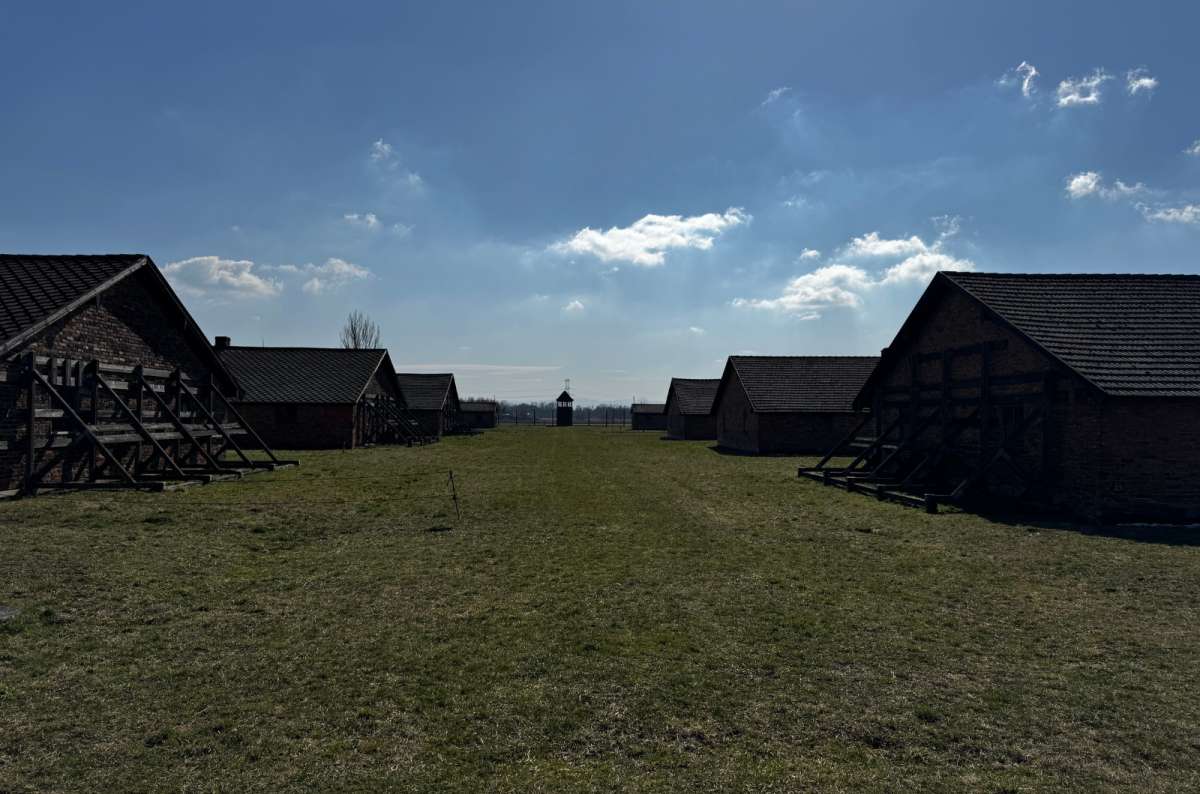
The mosntrosities that took place here are truly unimaginable
Then off you go through the famous gate with “Arbeit macht frei”. The significance of visiting the Auschwitz concentration camp is underscored by the role of museums in preserving the memory and history of the Holocaust, with exhibits and artifacts that help visitors understand the magnitude of what occurred.
During your visit, you will see the gas chamber, a key site where countless lives were lost, and the ruins of barracks and crematoriums, which serve as stark evidence of the camp's tragic past. The time spent in different parts of the camp allows for reflection and a deeper understanding of the events that took place.
What to expect in visiting Auschwitz I
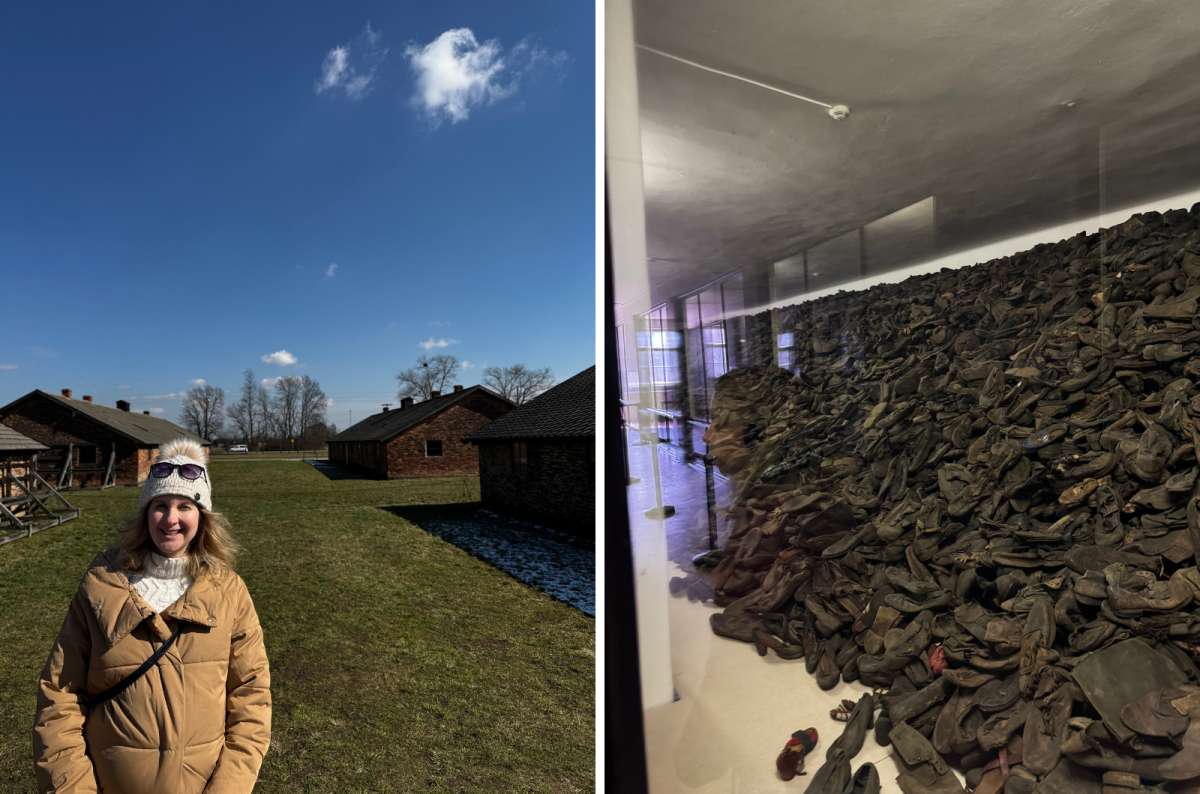
The collection of belongings deepens the emotional experience of Auschwitz
After entering the camp, you will realize how massive the place is. It is a small city.
The most surprising part was that most of the tour took place indoors, where you can see all the memorabilia, numbers, names, pictures, and information.
Inside, you can see the haunting evidence of life and death in the camp: personal belongings such as shoes, suitcases, and eyeglasses, taken from deportees upon arrival. Some of the exhibitions document the systematic process of extermination, while others tell the personal stories of those imprisoned here.
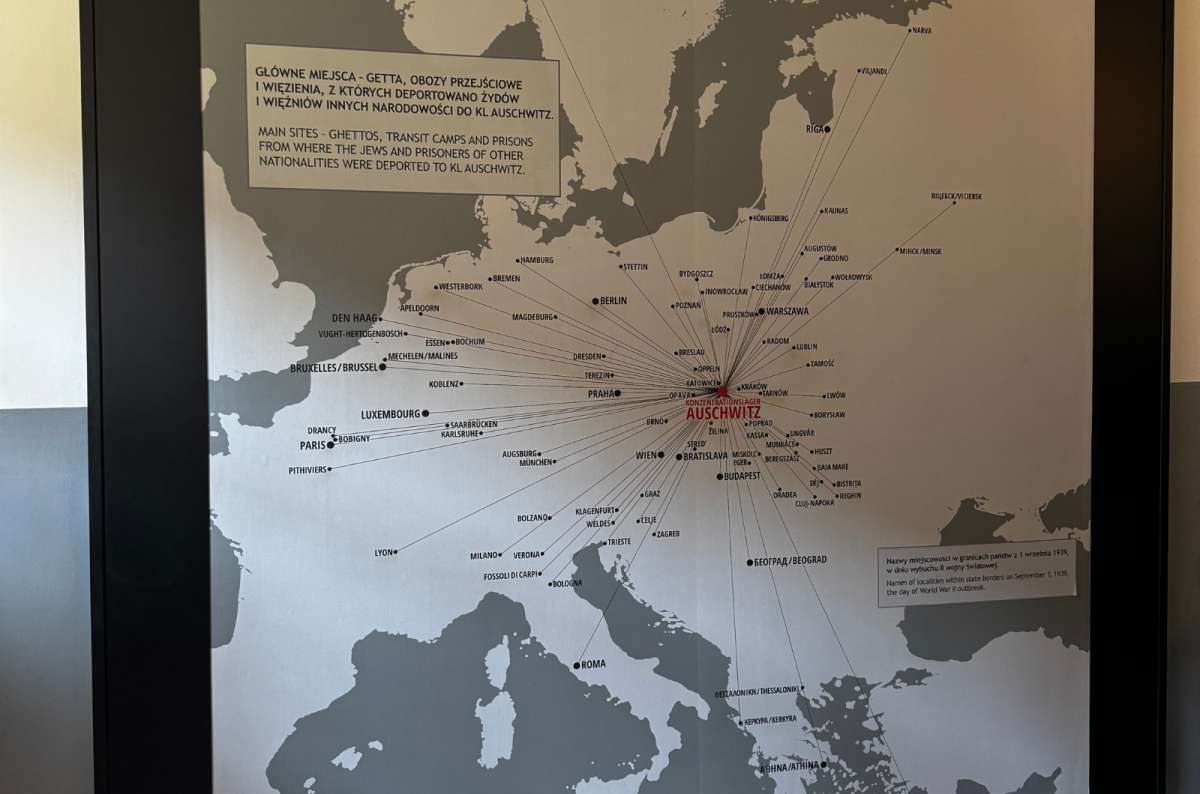
A map showing you all the places that the prisoners were brought from
Fact: The escape was virtually impossible due to dogs, guard towers, barbed wire, and really well-placed minefields.
The haunting experience is that in the pictures you can see Germans smiling and living their lives normally and selecting people–productive or unproductive (children, toddlers, elderly, pregnant women).
You will finish this part of the tour by walking through one of the few remaining gas chambers and crematoriums in the camps.
What to expect in visiting Auschwitz II Birkenau
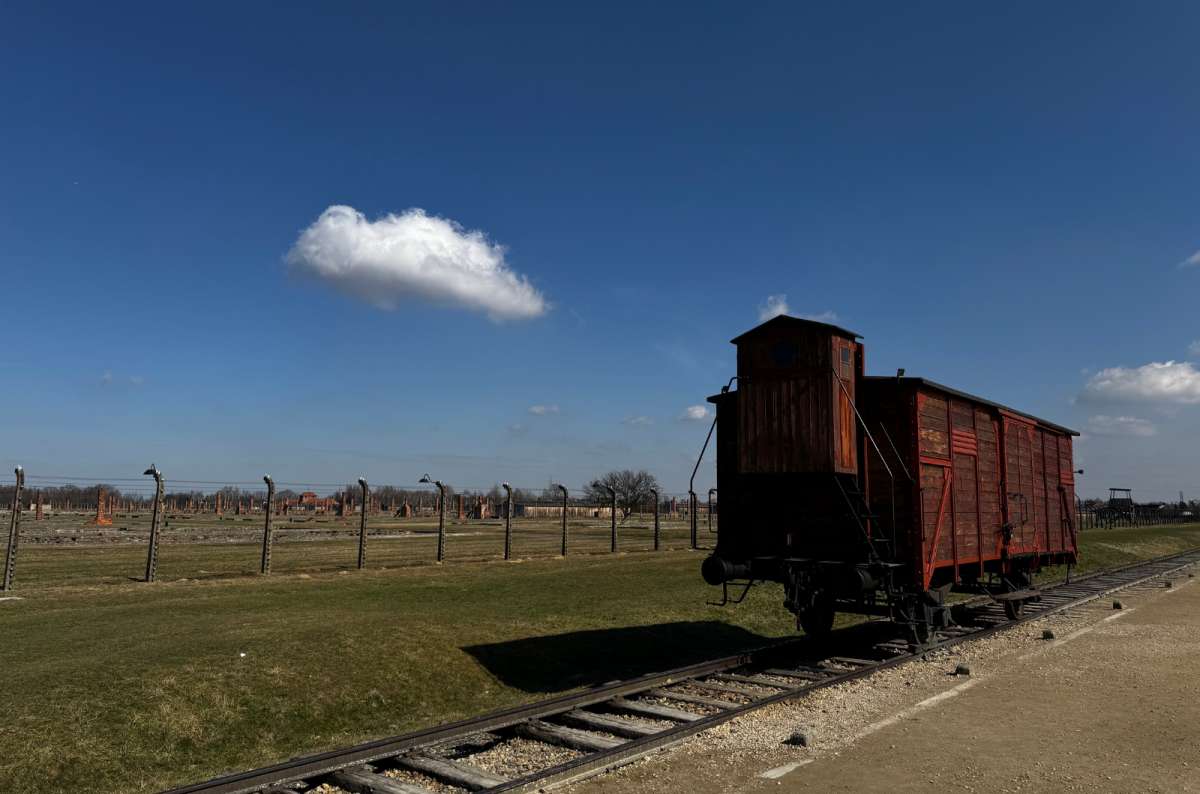
They even managed to preserve the trains that were used back in the day
After a brief break and separating the groups of visitors who had the full tour, you will go by bus to the second part of the tour. Birkenau.
By the bus, you will arrive at the famous train station, which is depicted in most movies with the gate and the platform.
In Birkenau, you will walk a lot more than in Auschwitz, as this camp is gigantic compared to Auschwitz.
Fun Fact: Auschwitz II Birkenau is actually 25 times larger than Auschwitz I.
It is important to understand that Auschwitz is microscopic in size compared to Birkenau, even though the name is more notorious.
Top Tip: Nobody tells you that, but besides summer, take warm clothes as you will walk a lot outside. When I visited the second time, it was freezing. Calculate with open air and a longer tour, as the camp was much larger.
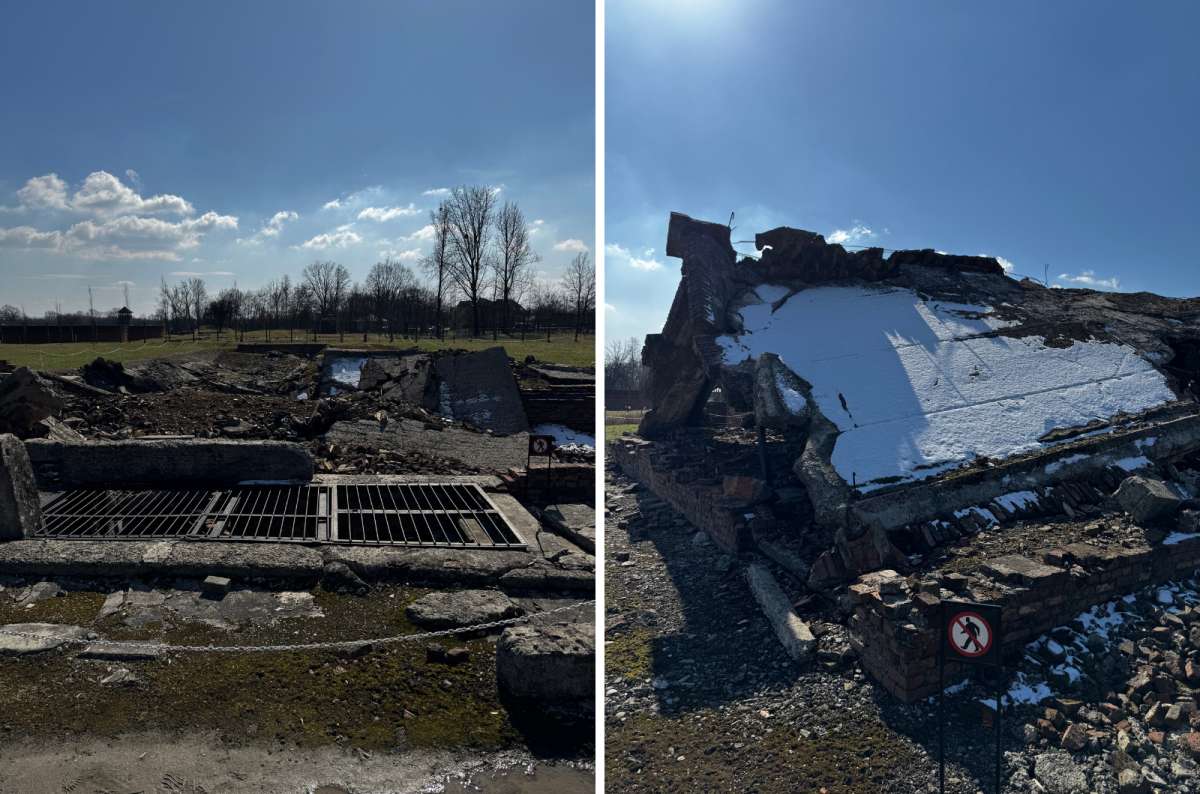
The atmosphere of Auschwitz with a light snow blanket is insane
You can see the wooden barracks, destroyed crematoriums, and gas chambers, and imagine how horrid it was here during the winter. (It was easy for me to imagine, as there was snow during my march visit, and I was tired just walking there in the freezing cold.)
When I visited, there was a small dusting of snow on a very sunny day. It felt very emblematic of the place, which in turn had a much more haunting atmosphere.
After another hour of sightseeing, you can go back to the bus stop, where the buses go every few minutes to take you back to the main entrance and parking lot.

How was the guided tour?
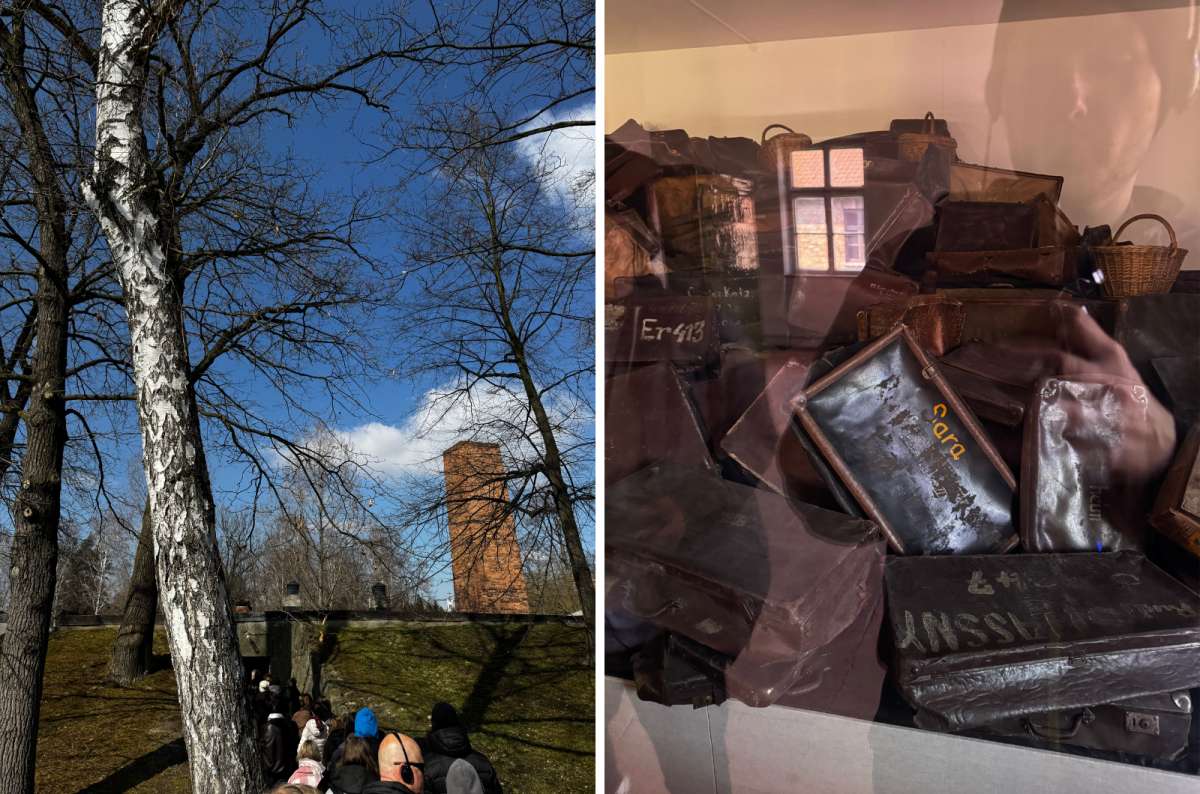
The guide leads you through the outside and the inside of the camp as well
I can't imagine not doing Auschwitz I without the tour guide. It gives you a lot of context and useful information. The guides are well-informed, so feel free to ask anything. I did.
In a few minutes, you will take off your headphones, and then the guide will tell you about the history, and while you walk through the camps, he will explain all the details of the particular site you are standing at.
There are not many info tables. I recommend you take the guide in the language you really use. Otherwise, your tour will be a sort of half-quality tour.
The tour is really cleverly done, as you walk the walk of the actual prisoners from the selection, to the belongings, into the gas chambers… and the living quarters and conditions of the people living here.
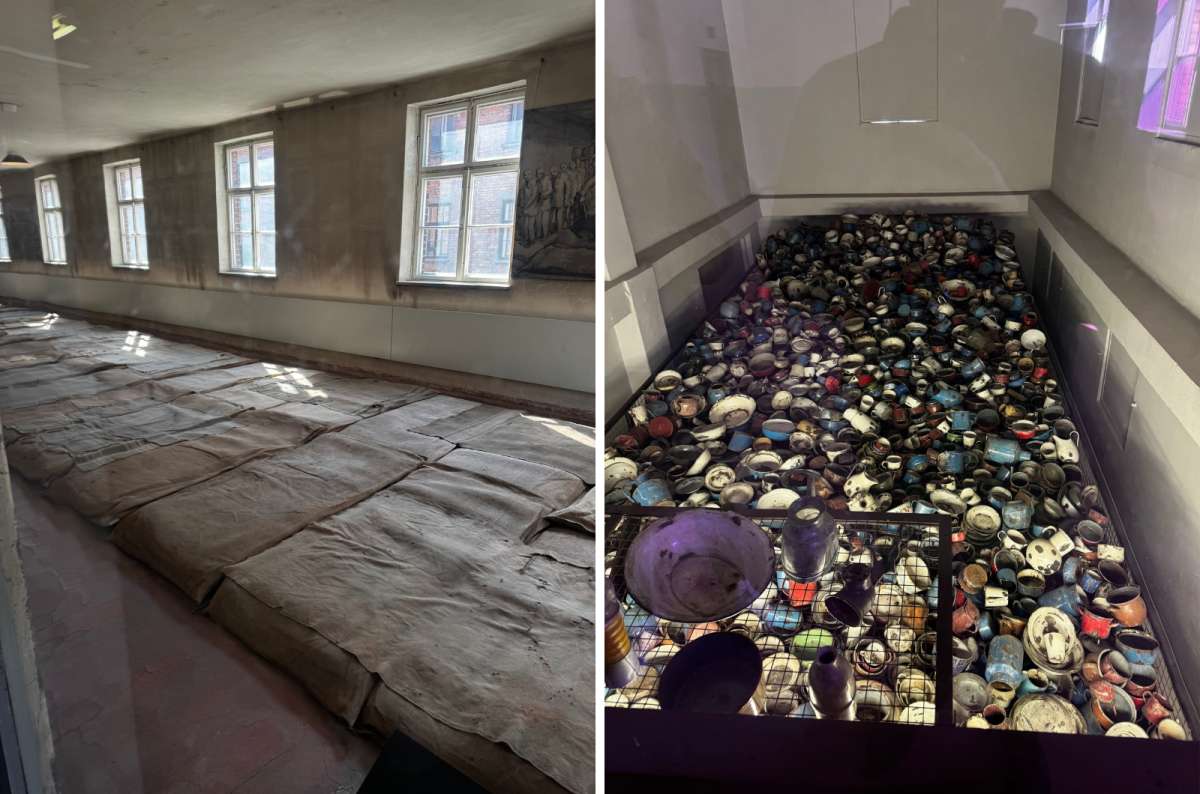
The inside of the barracks gives you insight into the conditions the prisoners were forced to endure
Top Tip: You can take pics in most places, but there are some places where you can’t. You mostly can't take pictures of any piety and memorial site such as gas chambers, etc.
It is also important to understand that almost everywhere you walk, there are ashes of the victims, so you should treat the whole place with respect.
The full tour will take you at least 3 hours and about over 6,000 steps, so about 5–6 km.
Conclusion: Is Auschwitz worth visiting?
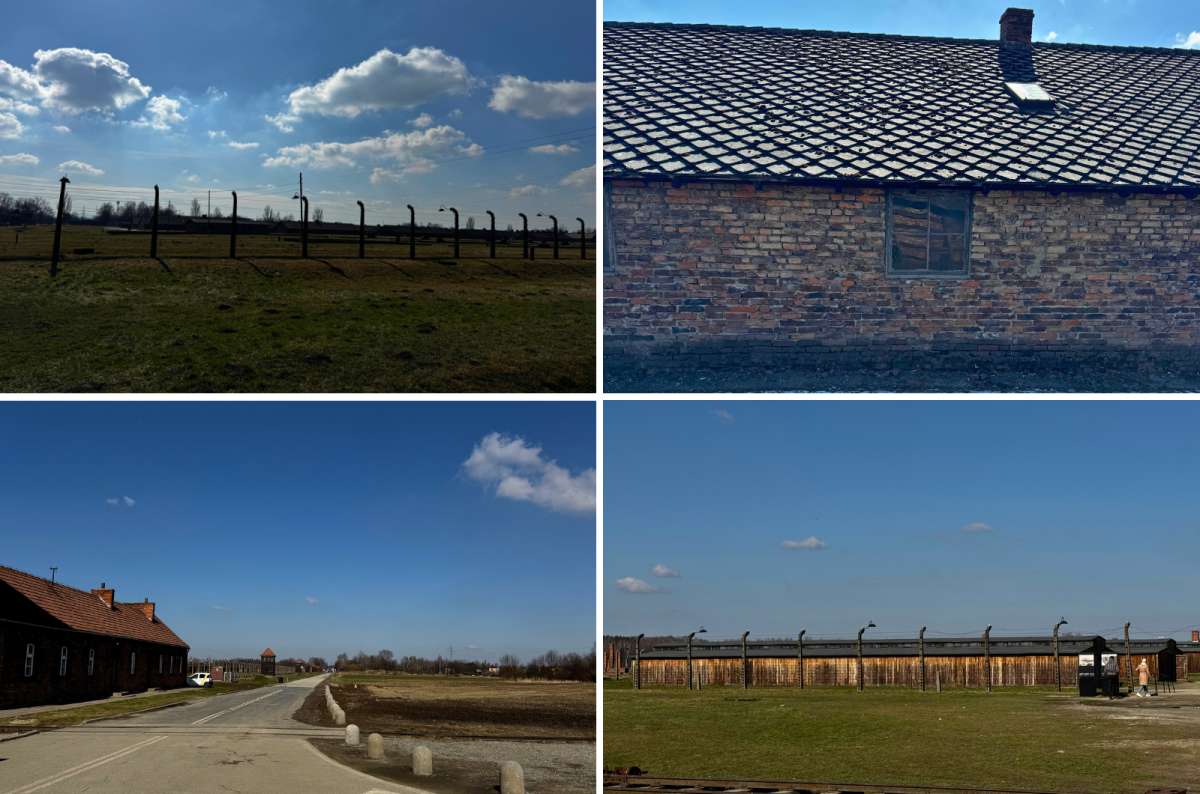
Auschwitz can look bare and empty on the first glance, but the atmosphere consumes you entirely
I easily rank Auschwitz visit on my imaginary scale 10/10, an absolute must-visit place in Poland and most likely must must-visit place in the world, unless of course you are a history barbarian.
Honestly, there could be more information upfront, for example, about security, coming early and guided tours, and mainly transports between the camps, as they could be organized better.
But in the end, it is such a powerful place that shows you the true face of human history.
Weather and time of year: When is the best time to visit Auschwitz?
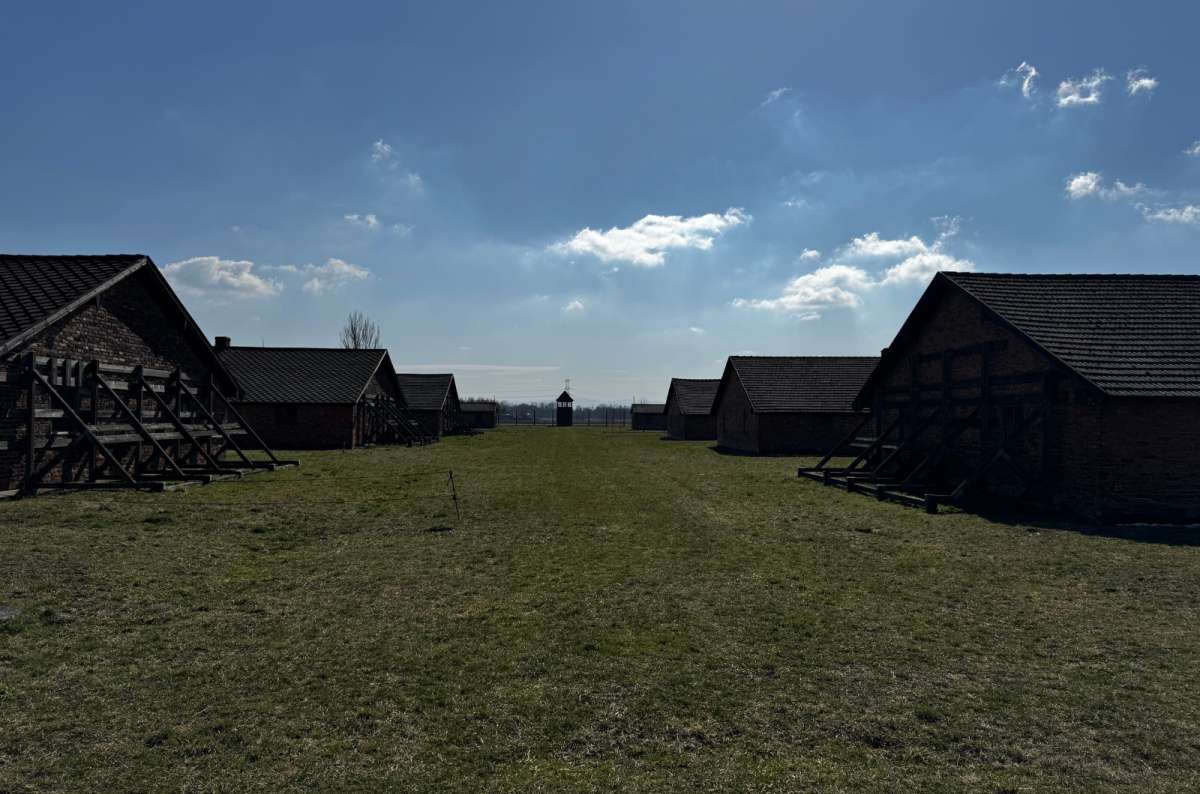
Auschwitz has a lot to offer any time of year–it is haunting even on the sunniest of days
Choosing the best time to visit Auschwitz depends on what kind of experience you’re looking for. The site is open all year, but each season offers a different atmosphere.
Spring and summer are the most popular times for a visit to Auschwitz, with pleasant weather and longer daylight hours—perfect for exploring the extensive grounds during a guided tour. However, these months also bring large crowds, which can make the site feel busy and sometimes detract from the reflective atmosphere.
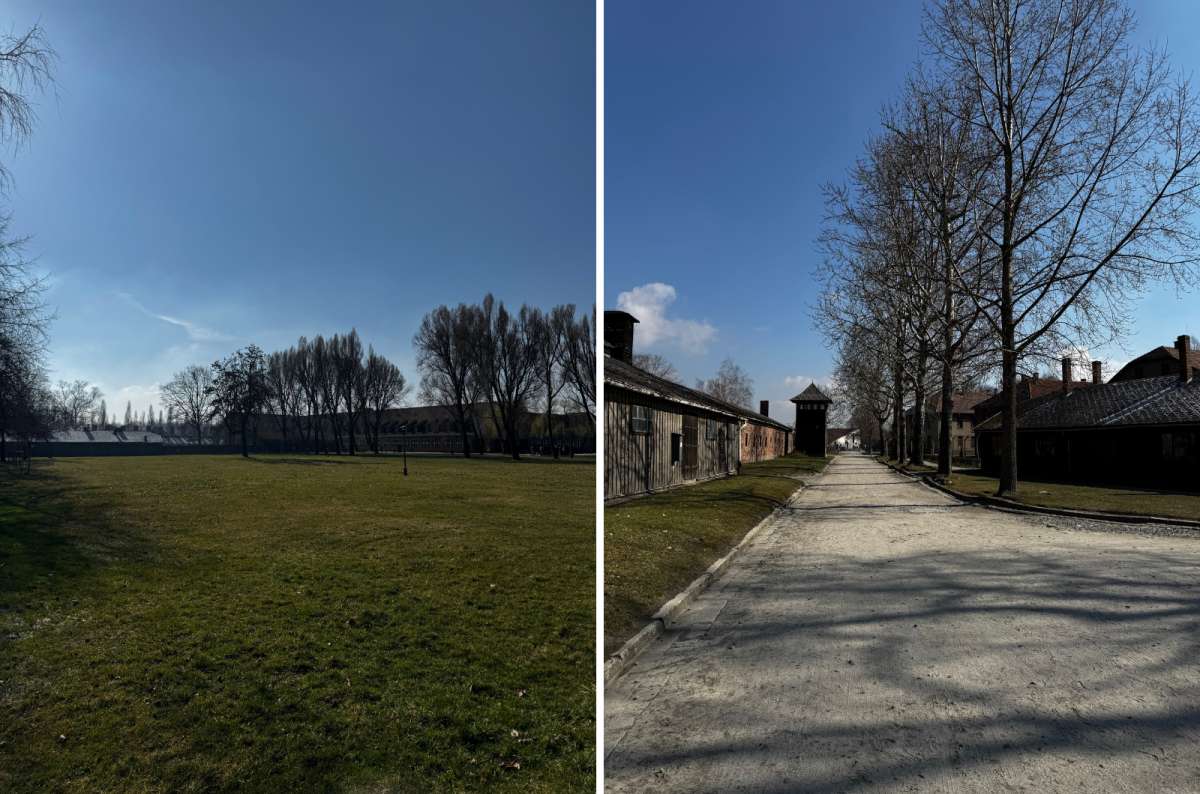
The weather really strongly influences your experience here
If you prefer a quieter, more contemplative visit, consider coming in autumn or winter. The colder months are less crowded, and the somber weather can add to the gravity of the experience. Just be prepared: the site is mostly outdoors, and it can get extremely cold, especially in Birkenau, so dress warmly and wear comfortable shoes for walking.
No matter when you choose to visit, it’s essential to book your entry tickets and guided tour in advance, as tours run on a strict schedule and spots fill up quickly. Whether you visit in the warmth of summer or the chill of winter, Auschwitz remains a powerful and unforgettable site.
Visiting Auschwitz with children
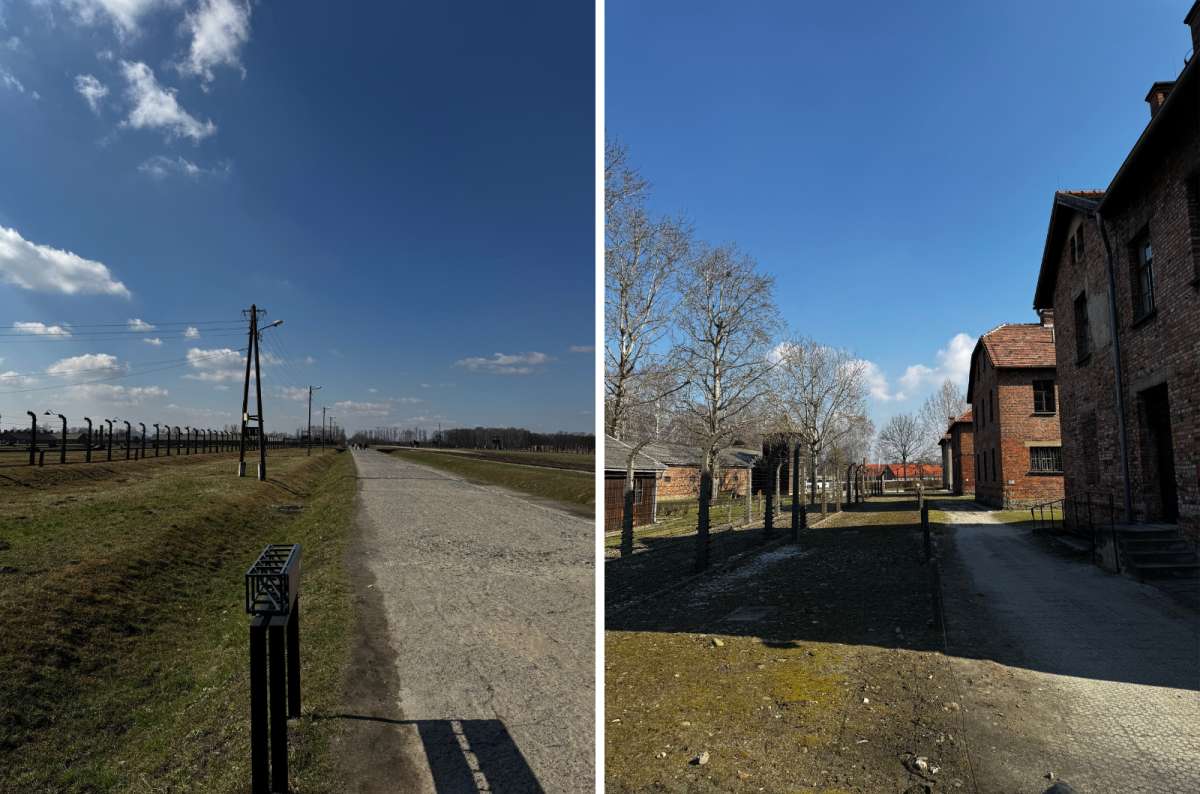
A visit to the Auschwitz concentration camp can have a strong impact, especially on children
If you’re considering a visit to Auschwitz with children, it’s essential to approach the experience with care and sensitivity. The Auschwitz Memorial itself recommends that children under 14 not visit the site, as the content and atmosphere can be extremely distressing for younger visitors. However, if you decide that your child is ready, preparation is key.
Before your visit to Auschwitz, talk openly with your child about the history of the site, explaining the events in a way that is appropriate for their age and maturity level.
The Auschwitz Museum offers educational resources and guides designed specifically for younger audiences, which can help make the history more accessible and less overwhelming.
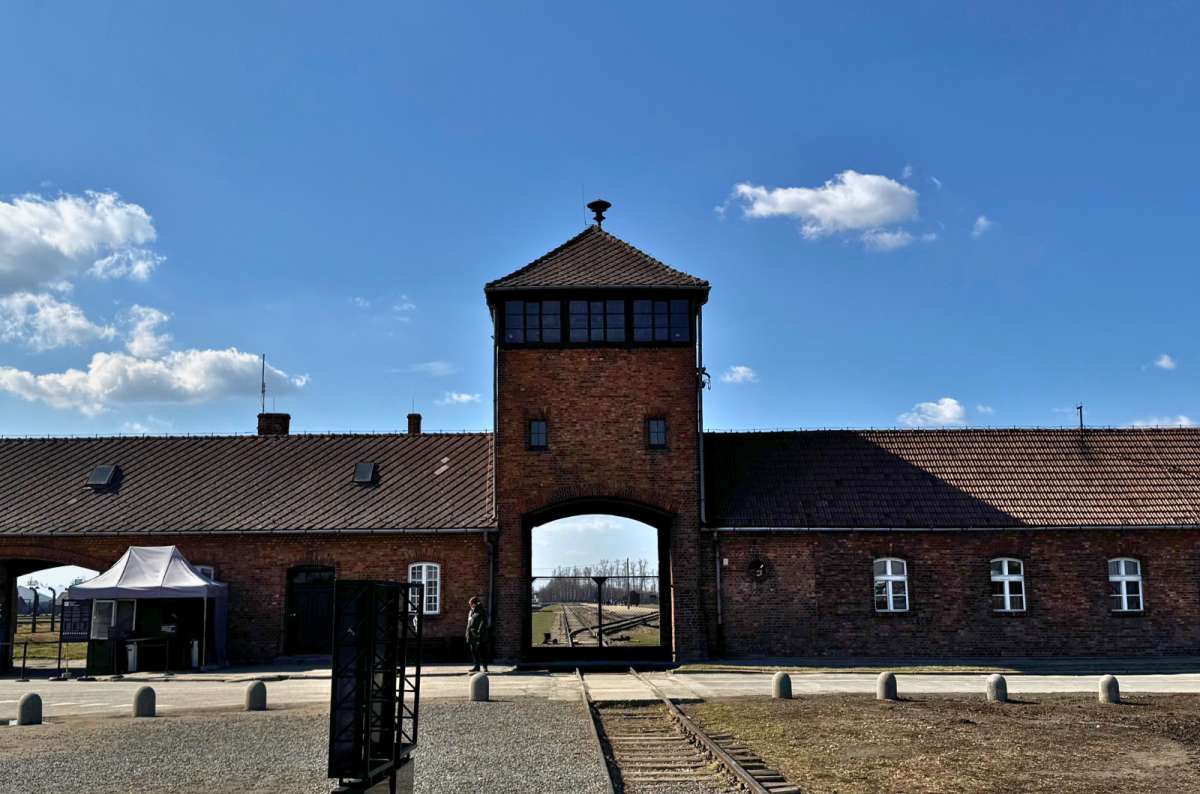
Remember to always remain respectful and empathetic. Real people were brought in through this gate
During your tour, pay close attention to your child’s emotional state. Some exhibits and stories are particularly graphic and may be difficult for children to process. Be ready to answer questions honestly, provide comfort, and take breaks if needed.
Remember, visiting Auschwitz is not just a history lesson—it’s an encounter with the realities of human suffering and resilience. After your visit, give your child space to talk about their feelings and thoughts, and consider following up with additional resources or discussions at home.
Ultimately, whether or not to visit Auschwitz with children is a personal decision, but with careful preparation and support, it can be a meaningful and educational experience.
Nearby attractions: Wieliczka Salt Mines?
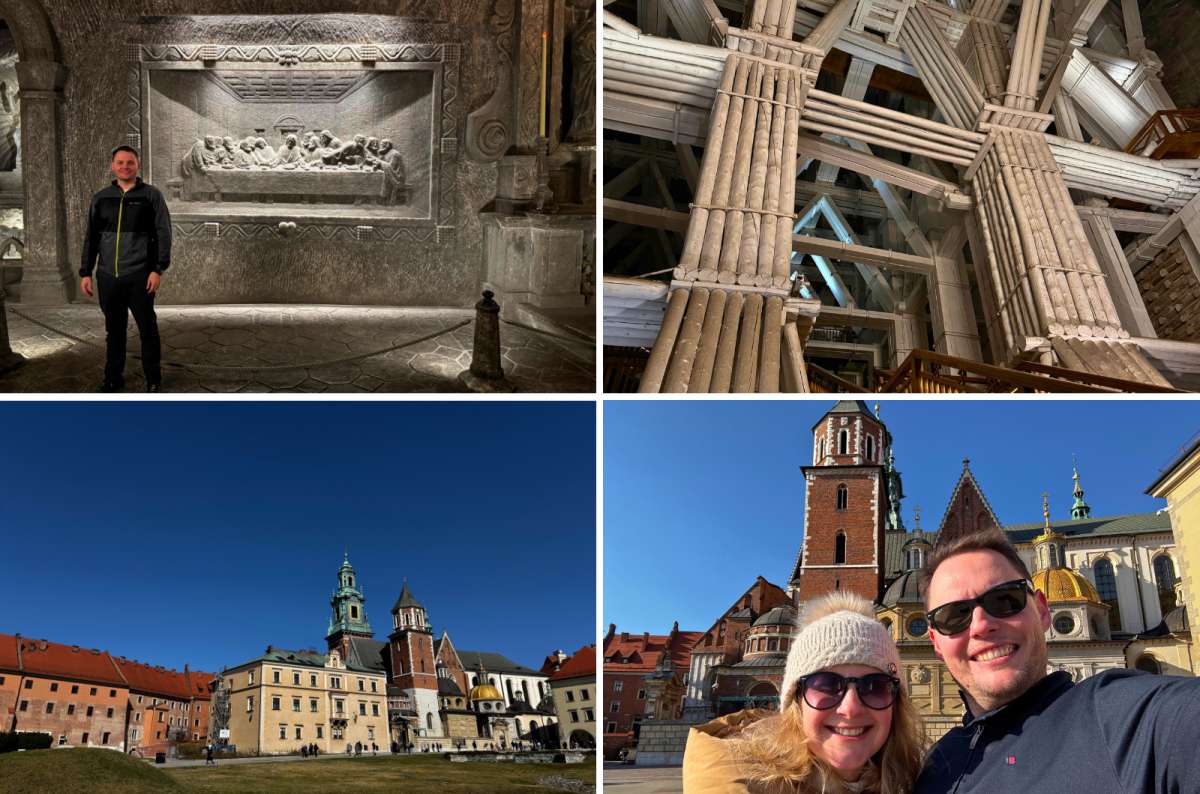
The surrounding area has so much to offer to lighten up the mood @ Wieliczka Salt Mine and Wawel Castle
While a visit to Auschwitz is a profound and often all-consuming experience, the surrounding region offers several other sites that are well worth visiting. The city of Krakow, just an hour away, is a beautiful city rich in history and culture.
Take time to walk through the Old Town, visit the impressive Wawel Castle, or enjoy the vibrant atmosphere of the main square. Krakow is also home to the Schindler’s Factory Museum, which provides a powerful look at the city’s experience during World War II and the story of Oskar Schindler.
Another must-see is the Wieliczka Salt Mine, a UNESCO World Heritage Site located near Krakow. The mine features breathtaking underground chambers, salt sculptures, and a fascinating history that stretches back centuries.
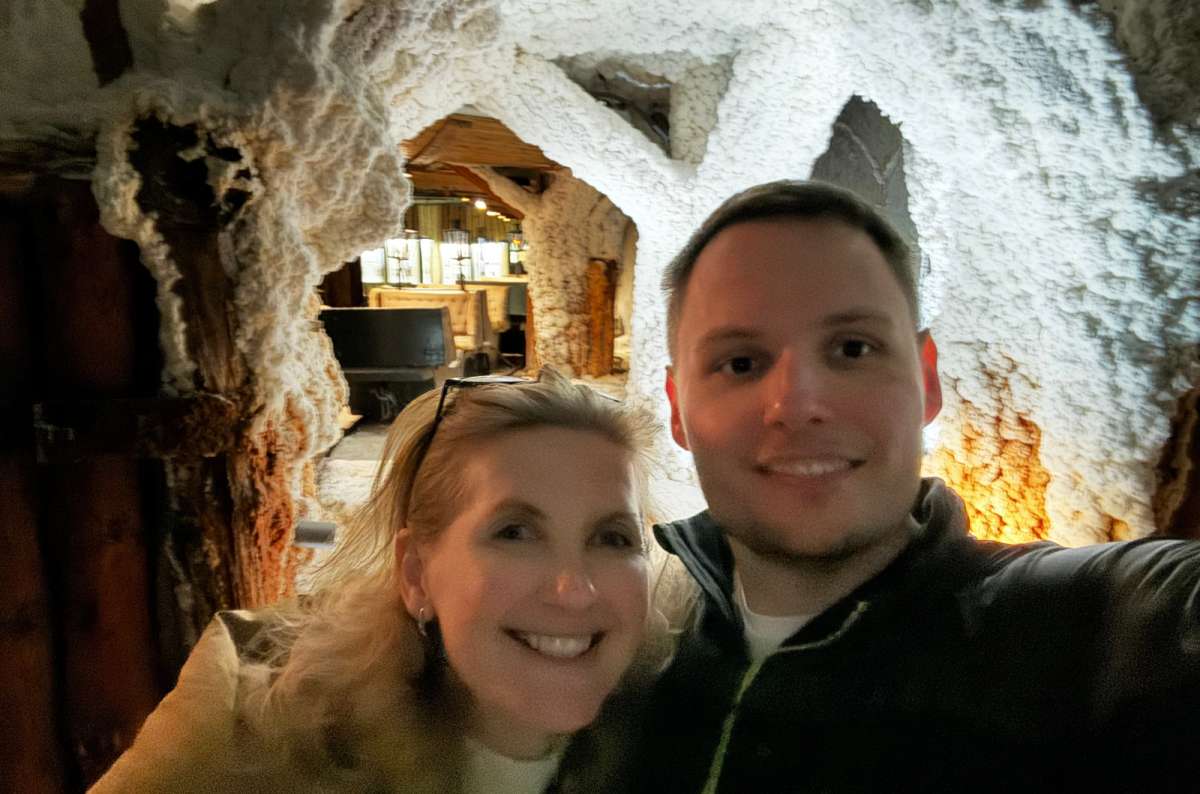
Wieliczka Salt Mine makes for a fantastic day trip from Krakow
For those interested in Jewish history, the Auschwitz Jewish Center in the nearby town of Oświęcim offers exhibitions and programs that explore the life of the Jewish community before the Holocaust.
By combining your visit to Auschwitz with these nearby attractions, you can gain a deeper understanding of the region’s history and culture. Whether you’re interested in World War II history, unique sites like the Wieliczka Salt Mine, or simply want to experience the beauty of southern Poland, there’s plenty to explore and reflect on during your trip.
Sometimes, all you need to do is take the first step... I've filtered out the best hotels in Krakow for you
Save it for yourself to come back to later, or share with your friends on social media!
This post contains affiliate links. If you make a booking through one of my links, I may earn a small commission—at no additional cost to you. Thank you for your support!





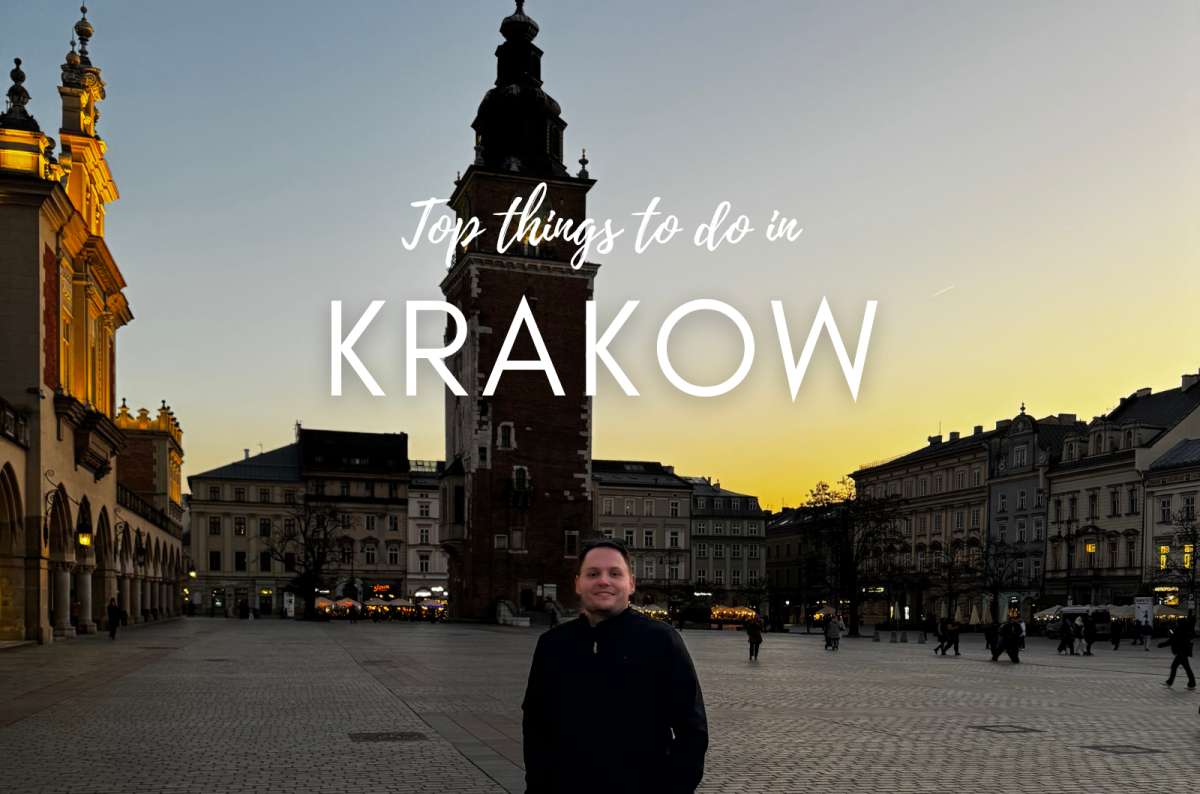
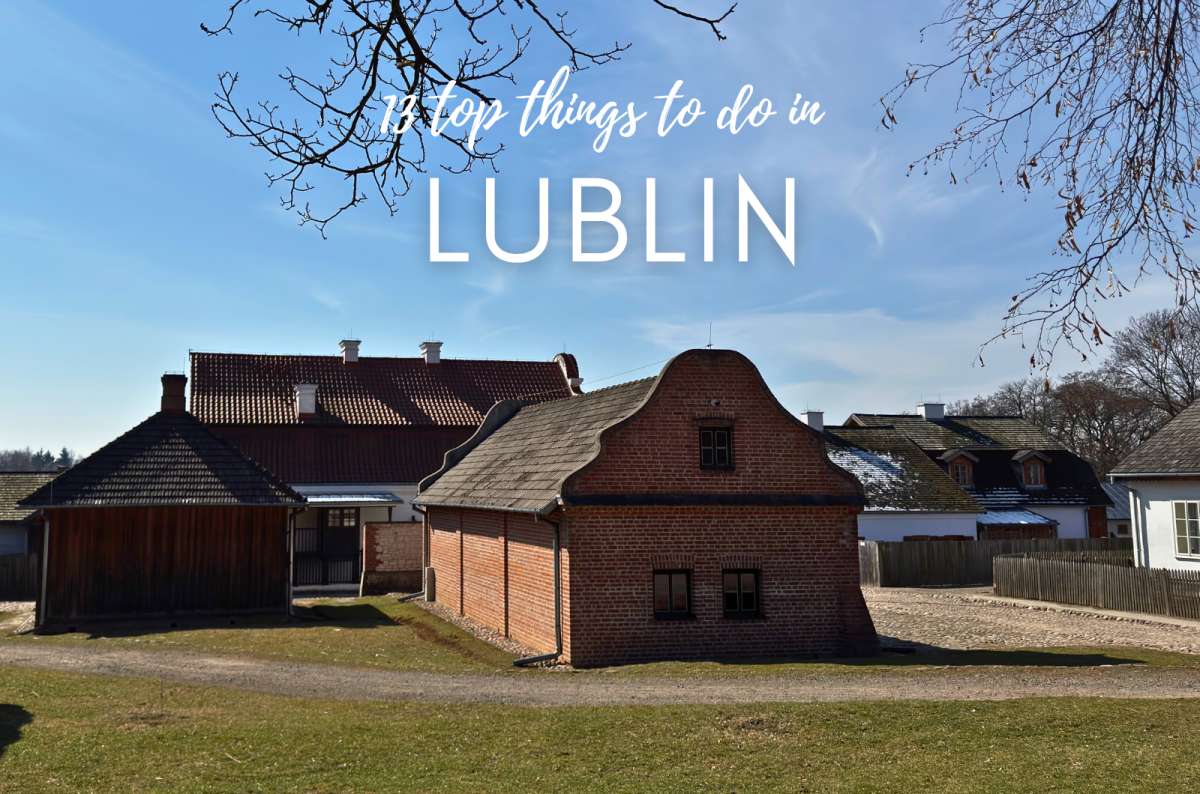



Comments | Thoughts? Give us a shout!